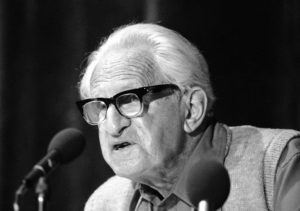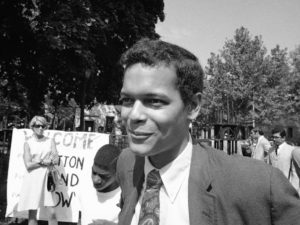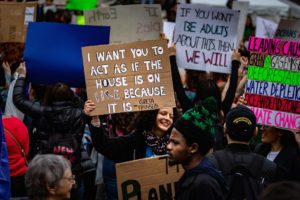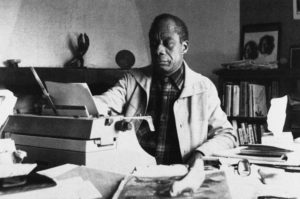Kill Anything That Moves
Nick Turse’s book about the Vietnam War exposes the sickness of the hyper-masculine military culture, the intoxicating rush and addiction of violence, and the massive government spin machine that lies daily to a gullible public and uses tactics of intimidation, threats and smear campaigns to silence dissenters. Nick Turse’s work is one of the most important books ever written about the Vietnam War.
“Kill Anything That Moves: The Real American War in Vietnam” A book by Nick Turse
Nick Turse’s “Kill Anything That Moves: The Real American War in Vietnam” is not only one of the most important books ever written about the Vietnam conflict but provides readers with an unflinching account of the nature of modern industrial warfare. It captures, as few books on war do, the utter depravity of industrial violence — what the sociologist James William Gibson calls “technowar.” It exposes the sickness of the hyper-masculine military culture, the intoxicating rush and addiction of violence, and the massive government spin machine that lies daily to a gullible public and uses tactics of intimidation, threats and smear campaigns to silence dissenters. Turse, finally, grasps that the trauma that plagues most combat veterans is a result not only of what they witnessed or endured, but what they did. This trauma, shame, guilt and self-revulsion push many combat veterans — whether from Vietnam, Iraq or Afghanistan — to escape into narcotic and alcoholic fogs or commit suicide. By the end of Turse’s book, you understand why.
This is not the book Turse set out to write. He was, when his research began in June 2001, a graduate student looking at post-traumatic stress disorder among Vietnam veterans. An archivist at the U.S. National Archives asked Turse whether he thought witnessing war crimes could cause PTSD. He steered Turse to yellowing reports amassed by the Vietnam War Crimes Working Group. The group, set up in the wake of the My Lai massacre, was designed to investigate the hundreds of reports of torture, rape, kidnapping, forced displacement, beatings, arson, mutilation, executions and massacres carried out by U.S. troops. But the object of the group was not to discipline or to halt the abuses. It was, as Turse writes, “to ensure that the army would never again be caught off-guard by a major war crimes scandal.” War crimes, for army investigators, were “an image management” problem. Those charged with war crimes were rarely punished. The numerous reports of atrocities collected by the Vietnam War Crimes Working Group were kept secret, and the eyewitnesses who reported war crimes were usually ignored, discredited or cowed into silence.
Turse used the secret Pentagon reports and documents to track down more than 100 veterans — including those who had reported witnessing atrocities to their superiors and others charged with carrying out atrocities — and traveled to Vietnam to interview survivors. A decade later he produced a masterpiece. Case after case in his book makes it painfully clear that soldiers and Marines deliberately maimed, abused, beat, tortured, raped, wounded or killed hundreds of thousands of unarmed civilians, including children, with impunity. Troops engaged in routine acts of sadistic violence usually associated with demented Nazi concentration camp guards. And what Turse describes is a woefully incomplete portrait, since he found that “an astonishing number of marine court-martial records of the era have apparently been destroyed or gone missing,” and “most air force and navy criminal investigation files that may have existed seem to have met the same fate.”
The few incidents of wanton killing in Vietnam — and this is also true for the wars in Iraq and Afghanistan — that did become public, such as My Lai, were dismissed as an aberration, the result of a few soldiers or Marines gone bad. But, as Turse makes clear, such massacres were and are, in our current imperial adventures, commonplace. The slaughters “were the inevitable outcome of deliberate policies, dictated at the highest levels of the military,” he writes. They were carried out because the dominant tactic of the war, as conceived by our politicians and generals, was centered on the concept of “overkill.” And when troops on the ground could not kill fast enough, the gunships, helicopters, fighter jets and bombers came to their assistance. The U.S. Air Force contributed to the demented quest for “overkill” — eradicating so many of the enemy that recuperation was theoretically impossible — by dropping the equivalent of 640 Hiroshima-sized atomic bombs on Vietnam, most actually falling on the south where our purported Vietnamese allies resided. And planes didn’t just drop bombs. They unloaded more than 70 million tons of herbicidal agents, 3 million white phosphorus rockets — white phosphorous will burn its way entirely through a body — and an estimated 400,000 tons of jellied incendiary napalm. “Thirty-five percent of the victims,” Turse writes, “died within fifteen to twenty minutes.” Death from the skies, like death on the ground, was often unleashed capriciously. “It was not out of the ordinary for U.S. troops in Vietnam to blast a whole village or bombard a wide area in an effort to kill a single sniper,” Turse writes.
|
To see long excerpts from “Kill Anything That Moves” at Google Books, click here. |
Murder is an integral part of war. And the most disturbing form of murder, because it is so intimate, is carried out by infantry troops. The god-like power that comes with the ability to destroy anything, including other human beings, along with the intoxicating firepower of industrial weapons, rapidly turns those who wield these weapons into beasts. Human beings are reduced to objects, toys to satiate a perverse desire to dominate, humiliate, control and kill. Corpses are trophies. Many of the Vietnamese who were murdered, Turse relates, were first subjected to degrading forms of public abuse, gang rape, torture and savage beatings. They were, Turse writes, when first detained “confined to tiny barbed wire ‘cow cages’ and sometimes jabbed with sharpened bamboo sticks while inside them.” Other detainees “were placed in large drums filled with water; the containers were then struck with great force, which caused internal injuries but left no scars.” Some were “suspended by ropes for hours on end or hung upside down and beaten, a practice called ‘the plane ride.’ ” Or they “were chained with their hands over their heads, arms fully extended, so their feet could barely touch the ground — a version of an age-old torture called the strappado. Untold numbers were subjected to electric shocks from crank-operated field telephones, battery-powered devices, or even cattle prods.” Soles of feet were beaten. Fingernails were ripped out. Fingers were dismembered. Detainees were slashed with knives, “suffocated, burned by cigarettes, or beaten with truncheons, clubs, sticks, bamboo flails, baseball bats, and other objects. Many were threatened with death or even subjected to mock executions.” Turse found that “detained civilians and captured guerrillas were often used as human mine detectors and regularly died in the process.” And while soldiers and Marines were engaged in daily acts of brutality and murder, the Central Intelligence Agency “organized, coordinated, and paid for” a clandestine program of targeted assassinations “of specific individuals without any attempt to capture them alive or any thought of a legal trial.” “All that suffering,” Turse, writes, “was more or less ignored as it happened, and then written out of history even more thoroughly in the decades since.”
Turse, in one of many accounts, describes a string of atrocities committed in the Duc Pho/Mo Duc border region in spring 1967 by Charlie Company, 2nd Battalion, 35th Infantry under the command of Capt. James Lanning. A wounded detainee, Turse writes, was dumped into a boat and pushed into a rice paddy where he was riddled with bullets and finished off with a grenade. A wounded woman was covered with a straw mat and set on fire. Paul Halverson, a soldier and military combat correspondent who accompanied the unit, when asked about the total number of civilians killed by Lanning’s force, stated in the book: “The entire time I was over there — just by Charlie Company — I’d say it would be in the hundreds.”
Maj. Gordon Livingston, a regimental surgeon with the 11th Armored Cavalry Regiment, in 1971 testified before Congress that he witnessed “a helicopter pilot who swooped down on two Vietnamese women riding bicycles and killed them with the helicopter skids.” The pilot, after being grounded briefly and investigated, was soon exonerated and allowed back in the air.
Soldiers and Marines, as is common in all wars, collected body parts of dead Vietnamese — heads, noses, scalps, breasts, teeth, ears, fingers, genitals — and displayed them or wore them in necklaces. “There was people in all the platoons with ears on cords,” Jimmie Busby, a member of the 75th Rangers during 1970-1971, told an Army criminal investigator. Corpses were dressed up and twisted into comic poses for photographs or gruesomely mutilated. Severed heads of Vietnamese were mounted on pikes or poles in Army camps. The dead were lashed onto Army vehicles — which at times ran over Vietnamese civilians for sport — and driven through villages.
Rape was as common as murder. A veteran from the 198th Light Infantry Brigade is quoted by Turse as saying that he knew of 10 to 15 rapes of young girls by soldiers from his unit “within a span of just six or seven months.” A Vietnamese woman in an Army report Turse quotes said she was detained by troops from the 173rd Airborne Brigade and “then raped by approximately ten soldiers.” “In another incident,” Turse writes, “eleven members of one squad from the 23rd Infantry Division raped a Vietnamese girl. As word spread, another squad traveled to the scene to join in. In a third incident, an American GI recalled seeing a Vietnamese woman who was hardly able to walk after she had been gang-raped by thirteen soldiers.” A Marine in the book spoke about a nine-man squad that entered a village to hunt for “a Viet Cong whore.” The squad found a woman, raped her and then shot her through the head.
“One marine remembered finding a Vietnamese woman who had been shot and wounded,” Turse writes. “Severely injured, she begged for water. Instead, her clothes were ripped off. She was stabbed in both breasts, then forced into a spread-eagle position, after which the handle of an entrenching tool — essentially a short-handled shovel — was thrust up her vagina. Other women were violated with objects ranging from soda bottles to rifles.”
Vietnamese who were detained in the country’s “massive incarceration archipelago” were slapped, punched, kicked, sexually assaulted, given electric shocks and subjected to the “water-rag” treatment, or waterboarding.
“They tried to force me to confess that I was involved with the Viet Cong,” one detainee said of her South Vietnamese and American interrogators. “I refused to make such a statement and so they stuck needles under the tips of my ten fingernails saying that if I did not write down what they wanted, and admit to being Viet Cong, then they would continue the torture.” When she did not comply “they tied my nipples to electric wires, then gave me electric shocks, knocking me to the floor every time they did so. They said that if they did not get the necessary information they would continue the torture. Two American soldiers were always standing on either side of me.”
Military commanders and politicians were seduced by the destructive fury they could call down on the enemy. Walls of automatic rifle fire, hundreds of rounds of belt-fed machine-gun fire, 90 mm tank rounds, endless sheets of grenades, mortars, artillery shells and claymore mines saturated the countryside while gigantic 2,700-pound explosive projectiles were fired from battleships along the coast. Canisters of napalm, daisy-cutter bombs, anti-personnel rockets, high-explosive rockets, incendiary rockets, cluster bombs, high-explosive shells and iron fragmentation bombs — including the 40,000-pound bomb loads dropped by giant B-52 Strarofortress bombers — along with chemical defoliants and chemical gases were dropped from the sky. The ceaseless assault would, the generals and politicians believed, ultimately ensure victory. The gleeful tally of the dead was captured in the perverse practice of body counts, a macabre scorecard to “prove” that our side was winning.
The official license granted to soldiers and Marines to kill anyone came in the form of the free fire zone — a term later changed by the military to the more neutral sounding “specified strike zone” — which had at its core the Orwellian logic of military institutions. In these zones, troops were informed, there were no civilians because everyone in a “free fire zone” was the enemy. Women. Children. The elderly. They were all legitimate targets. “You could not be held responsible for firing on innocent civilians since by definition there were none there,” an infantryman said. And when patrols shot and killed groups of unarmed civilians outside of officially designated free fire zones they unilaterally decided to designate their killing sites as free fire zones. War always exalts and elevates psychotic killers. And Vietnam became their playground. Sgt. Roy Bumgarner of the Army’s 1st Cavalry Division and later the 173rd Airborne Brigade “reportedly amassed an astonishing personal body count of more than 1,500 enemy KIAs, sometimes logging more kills with his six-man ‘wildcat’ team than the rest of his 500-man battalion combined.” Reports of Bumgarner’s indiscriminate killing sprees, excessive even by the standards of Vietnam, filtered back to the high command. In March 1968 Pvt. Arthur Williams, a sniper on Bumgarner’s scout team, informed military authorities that on “at least four occasions” he had seen Bumgarner kill unarmed Vietnamese civilians, Turse writes. Bumgarner, Turse reports, often planted Chinese communist grenades on the bodies of his victims — including children — so they could be called in as dead enemy troops. Charles Boss, who was on the sergeant’s wildcat team, is quoted as telling an Army criminal investigator “only a couple of weeks ago I heard Bumgarner had killed a Vietnamese girl and two younger kids (boys), who didn’t have any weapons.” Bumgarner was eventually court-martialed after numerous eyewitness reports of his propensity for murder. He was convicted of unpremeditated murder, reduced in rank and fined. But he never did any prison time. He continued his career in the military, soon regaining his old rank. The military was not about to lose his services. He spent seven years in Vietnam.
Turse also profiles Col. John Donaldson, a West Point graduate and former Olympian who organized “gook” hunts from helicopters. One officer is quoted in the book as saying that Donaldson and his chief intelligence officer “flew around in the colonel’s chopper with a crate of grenades, ‘frags’ they were called, and popped them in the rice fields over the ‘dinks’ who would attempt to run for cover when the chopper swooped down to chase them.” When enough reports of the colonel’s killing made it up the chain of command, his fellow officers, including Colin Powell who had served with him for eight months in Vietnam, made sure the charges were ignored or dismissed. Two of the key witnesses willing to testify against him, apparently under pressure, changed their testimony. The colonel was never reprimanded.
The killing campaign of Gen. Julian Ewell, nicknamed the “Butcher of the Delta,” reached staggering genocidal proportions in the Mekong Delta where he commanded the 9th Division. Ronald Bartek in the book remembered that the general “wanted to begin killing ‘4,000 of these little bastards,’ and then by the end of the following month wanted to kill 6,000, and so on from there.” Ewell launched an operation called “Speedy Express” that employed fleets of helicopter gunships, F-4 Phantoms, ships lobbing “Volkswagen-sized” shells, B-52 bombers, Swift Boats, snipers, teams of Navy SEALs and thousands of infantry troops. The provincial hospitals were soon flooded with civilian wounded. A veteran, disturbed by the massive loss of life, wrote a letter to Gen. William Westmoreland, the army’s chief of staff. He explained Ewell’s tactics: “If anybody ever got sniper fire from a tree line we’d use gunships and artillery on the villages and go in later.” He listed the names of the officers pushing the soldiers to carry out the massacres. He pleaded with the military to put a halt to the carnage. He wrote that any civilian who ran from U.S. troops was instantly shot. He detailed in the letter how “a battalion would kill maybe 15 to 20 a day. With four battalions in the Brigade that would be maybe 40 to 50 a day or 1200 to 1500 a month, easy. (One battalion claimed almost 1000 body counts one month!) If I am only 10% right, and believe me it’s lots more, then I am trying to tell you about 120-150 murders, or a My Lay each month for over a year.” He signed the letter “Concerned Sergeant.” The “Concerned Sergeant” was soon identified by the Criminal Investigation Command as George Lewis, a member of the 4th Battalion, 39th Infantry, of Ewell’s 9th Division. When nothing was done he wrote more letters to senior commanders. But his pleas were ignored. “No one,” Turse writes, “from the 9th Infantry Division was ever court-martialed for killing civilians during Speedy Express.” Ewell, in fact, was awarded a third star and promoted. He went on to help author a counterinsurgency manual for the Army. And, as Turse writes, “the rank-and-file troops who spoke out against murder were, for the most part, essentially powerless in the face of command-level cover-ups.”
Those soldiers and Marines who did report the war crimes they witnessed could sometimes face a fate worse than being pressured, discredited or ignored. On Sept. 12, 1969, Turse writes, George Chunko sent a letter to his parents explaining how his unit had entered a home that had a young Vietnamese woman, four young children, an elderly man and a military-age male. It appeared the younger man was AWOL from the South Vietnamese army. The young man was stripped naked and tied to a tree. His wife fell to her knees and begged the soldiers for mercy. The prisoner, Chunko wrote, was “ridiculed, slapped around and [had] mud rubbed into this face.” He was then executed. A day after he wrote the letter Chunko was killed. Chunko’s parents “suspected that their son had been murdered to cover up the crime.” Lt. Col. Anthony Herbert reported to his superiors “descriptions of torture at the 172nd Military Intelligence Detachment compound, as well as other horrific stories.” Maj. Carl Hensley was assigned to investigate. He soon found that the charges were accurate. But, according to his wife, Dolores, the more Hensley dug and the more he prodded the military to respond to the war crimes, the more despondent and depressed he became at home. “Carl withdrew into a shell,” she is quoted as saying, “stopped eating, did not talk to the children and did not or would not talk to me.” Hensley used a shotgun to commit suicide. The Army’s official response to the Herbert charges was to produce “a fifty-three page catalog of alleged discrepancies in Herbert’s public accounts of his time in the military” to discredit him. “The scores of atrocities that the army uncovered as a result of Herbert’s charges,” Turse writes, “would remain secret for decades.”
The almost unfathomable scale of the slaughter, the contribution of our technical, industrial and scientific apparatus to create deadlier weapon systems, implicates huge sections of our society in war crimes. The military and weapons manufacturers openly spoke of the war as a “laboratory” for new forms of killing. Turse’s book obliterates the image we have of ourselves as a good and virtuous nation. It mocks the popular belief that we have a right to impose our “virtues” on others by force. It exposes the soul of our military, which has achieved, through relentless propaganda and effective censorship, a level of public adulation that is terrifying. Turse reminds us who we are. And in an age of expanding wars in the Middle East, routine torture, murderous air and drone strikes and targeted assassinations, his book is not so much about the past as about the present. We have worked, consciously and unconsciously, to erase the terrible truth about Vietnam and ultimately about ourselves. This is a tragedy. For if we were able to remember who we were, if we knew what we were capable of doing to others, then we might be less prone to replicating the industrial slaughter of Vietnam in Iraq, Afghanistan, Pakistan, Somalia and Yemen.
“After the war,” Turse concludes, “most scholars wrote off the accounts of widespread war crimes that recur throughout Vietnamese revolutionary publications and American antiwar literature as merely so much propaganda. Few academic historians even thought to cite such sources, and almost none did so extensively. Meanwhile, My Lai came to stand for — and thus blot out — all other American atrocities. Vietnam War bookshelves are now filled with big-picture histories, sober studies of diplomacy and military tactics, and combat memoirs told from the soldiers’ perspective. Buried in forgotten U.S. government archives, locked away in the memories of atrocity survivors, the real American war in Vietnam has all but vanished from public consciousness.”
Your support is crucial…With an uncertain future and a new administration casting doubt on press freedoms, the danger is clear: The truth is at risk.
Now is the time to give. Your tax-deductible support allows us to dig deeper, delivering fearless investigative reporting and analysis that exposes what’s really happening — without compromise.
Stand with our courageous journalists. Donate today to protect a free press, uphold democracy and unearth untold stories.






You need to be a supporter to comment.
There are currently no responses to this article.
Be the first to respond.